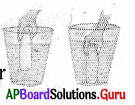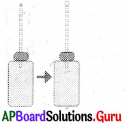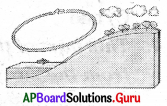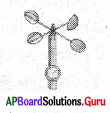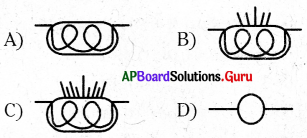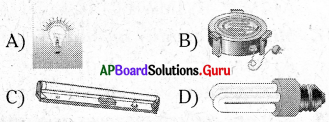Practice the AP 6th Class Maths Bits with Answers Chapter 10 Practical Geometry on a regular basis so that you can attempt exams with utmost confidence.
AP State Syllabus 6th Class Maths Bits 10th Lesson Practical Geometry with Answers
I. Choose the correct answer and write it in the brackets.
Question 1.
The instrument which can be used to a construct line segment is ……………….
A) Scale
B) Ruler
C) Compass
D) A and B
Answer:
D) A and B
Question 2.
The instrument which is used to construct an angle is ………………
A) Scale
B) Compass
C) Protractor
D) Ruler
Answer:
C) Protractor
![]()
Question 3.
Number of perpendicular bisectors that can be drawn to a line segment are/is …………….
A) 1
B) 2
C) 3
D) 4
Answer:
A) 1
Question 4.
Angle bisector divides the angle into …………………
A) two equal line segments
B) two equal angles
C) two equal rays
D) none
Answer:
B) two equal angles
Question 5.
The length of a line segments is 7 cm. If we draw the perpendicular bisector to the line segment, then the length of each part is ………………..
A) 3 cm
B) 3.5 cm
C) 4 cm
D) 4.5 cm
Answer:
B) 3.5 cm
II. Fill in the blanks.
1. Instrument which is used to measure the length of the given line segment ……………….
Answer:
Divider and compasses
2. Instrument used to draw a circle is ………………
Answer:
Compass
3. Perpendicular bisector can divide the line segment into ……………….
Answer:
two equal parts
4. Number of angle bisectors that can be drawn to an angle are/is ……………….
Answer:
1
5. Geometrical instruments used to construct the shapes are ……………….
Answer:
Ruler, compasses, divider, set-squares, protractor
![]()
6. If we draw the angle bisector to ∠AOB = 100°, then each angle = ……………..
Answer:
6) 50°
7. Parallel lines can be drawn by using the …………… instrument.
Answer:
set squares
8. \(\overline{\mathrm{PQ}}\) = 6 cm and l is the perpendicular bisector to \(\overline{\mathrm{PQ}}\) at O, then OP = cm
Answer:
3 cm
9. ∠AOB = 90° and \(\overrightarrow{O C}\) is the angle bisector to ∠AOB, then ∠AOC =
Answer:
45°
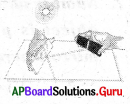

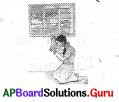







 …………….. Find the rule for the pattern.
…………….. Find the rule for the pattern.